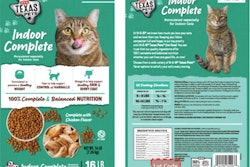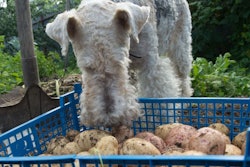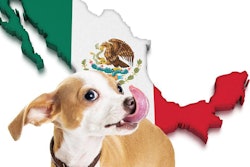
The results of the 2022 survey of pets and people in Australia have revealed a nation that loves its pets so much they parted with over A$33.2 billion to keep them fed, healthy, groomed and accessorized during the last 12 months.
The study was conducted online among a representative sample of Australian adults, many of them (85%) grateful to their pets for helping them get through the pandemic and economic hardships. As a result, Australian pet owners spent over A$17 billion on pet food this year, or 51% of the total reported expenditures on pet products and services. While most of the food budget went to pet dogs and cats, other kinds of pets such as fish, birds, small mammals, reptiles, crustaceans and farm animals also had their share of the food pie.
After pet food (51%), Australians paid for veterinary services (14%), pet products and accessories (9%) and pet healthcare products (9%). The rest of the A$33.2 billion were used to pay for pet dogs and cats' insurance, behavior and therapy sessions and grooming. As a whole, most of the expenses (89%) were on dogs and cats, the survey said.
From 2020 to 2022, Australia's pet ownership ballooned to an estimated 28.7 million pets now living in 6.9 million households or 69% of Australian households. In 2019 before the pandemic, pet ownership was at 61%.
Dogs are the most popular pet, with almost half of Australian households keeping at least one dog (48% in 2022, up from 40% in 2019). Cats come second, with a third of all households with at least one cat (33% in 2022, up from 27% in 2019).
When feeding their pets, Australians first consider what their pets like to eat (40%), the food's price (37%), the perceived value for money (37%), and the quality of the ingredients (36%). The survey said more experienced pet owners (who tend to be 40+ years old, women with no children) are more keen about their pets' food preferences. They are usually the cat owners, too, the survey added.
But it seems store-bought pet food wasn't enough. The survey also found out that 30% of the respondents cooked or made treats for their pets sometime during the past 12 months, while 20% let their pets try expensive human food.
The annual national survey on pets and people in Australia also underscored post-pandemic realities that pose new challenges to Australian pet owners.
“Natural disasters, increasing living costs, inflation, access to housing and other issues are placing pressure on many pet owners. In some circumstances, this can lead to difficult decisions to find alternate care arrangements for a beloved pet," said Lance Williams, president of Animal Medicines Australia, which spearheaded the survey. "By better understanding the experiences of pet owners, ownership drivers and challenges, governments and industries can create better, more responsive systems and processes to support pet owners and promote enduring, positive, responsible and beneficial pet ownership experiences."
With the survey, a profile of Australian pet owners was also established:
- 72% are homeowners and 36% are renters
- 86% have children below 18 years old
- 47% live alone
- 36% are couples-only households
- 82% earn A$100,000 or more per annum
- 72% have no social security benefits and 36% receive social security aids
- 74% are regional or rural based and 33% live in urban or inner city households












